The 2012 MacBook Air (11 & 13-inch) Review
by Anand Lal Shimpi on July 16, 2012 12:53 PM EST- Posted in
- Apple
- Mac
- MacBook Air
- Laptops
- Notebooks
Keyboard and Trackpad
The keyboard on the 2012 MacBook Air is the same as the 2011 model. You get a full sized keyboard on both the 11 and 13-inch models, with the alphanumeric keys measuring ~15 x 15mm. The function keys are half height on the 13 and even smaller on the 11, but there's no sacrifice in key size otherwise. Key travel and physical feedback are both as good as they can get on a chiclet-style keyboard. As Apple has now fully transitioned to this style of keyboard across all of its Macs, I can't really say I have any complaints about it. Apple's keyboard remains one of the best on the market.
The dedicated power button from the older Macs is gone and replaced with a power key that looks like another function key. The power key is functionally no different than the old power button - tap to turn on, hold to power down in the event of a hard lock.
The 2012 keyboard is nicely backlit, just like on every MacBook Air but the 2010. Apple offers fine grained controls over the keyboard backlight (16 adjustable levels). You can either choose to control it on your own or let the ambient light sensor control the intensity of the keyboard's backlight.
We spend so much time pointing out poor clickpads in the latest Ultrabooks that it's important to mention just how good the clickpad is in the MacBook Air. Apple continues to use the top hinged design on its glass covered clickpad. Clicks are easier towards the bottom of the pad than at the top where the hinge is. The clickpad is glass covered which makes it very smooth and comfortable to use. Finger rejection is handled extremely well under OS X, accidental clicks are very rare. I typically keep my thumb on the clickpad, near where the right mouse button would traditionally be, and mouse around with my index finger. While I normally have issues with this usage model on most of the clickpads I use, Apple's implementation is both the exception and the benchmark. It just works.
USB 3.0 Performance
USB 3.0 is alive and well on the new MacBook Air. Both ports support the standard and both OS X and the hardware supports the USB Attached SCSI Protocol (UASP). I have noticed that USB device compatibility is more finicky on the MacBook Air compared to the rMBP. Most devices seem to work fine but Kingston's HyperX Max 3.0 for example wouldn't work, although it worked fine on the rMBP. The hardware is actually detected by OS X, the drive simply never appears to Disk Utility or in Finder. A few folks have noticed something similar with other drives on Apple's support forums but the issue doesn't seem to have widespread implications.
USB 3.0 performance however is just as good as on the rMBP. I still need to grab a UASP enabled USB 3.0 device with 6Gbps SATA support to really stress the interface, but using Seagate's GoFlex USB 3.0 drive and a Kingston HyperX SSD in place of the mechanical drive I'm able to hit around 260MB/s:

Thunderbolt support comes courtesy of a 4-channel Cactus Ridge controller. The Thunderbolt port continues to be on the opposite side of the machine from the power connector. Anyone who owns a Cinema or Thunderbolt Display will bemoan the continued use of this configuration.
FaceTime HD Camera
Last year Apple introduced a 720p FaceTime HD camera to its MacBook Pro. The 2012 MBA inherits the same camera. Image quality remains acceptable as long as you're in a room with not terrible lighting.
Most of the Ultrabooks I play with these days try to mimic the FaceTime HD experience by using a 720p sensor. Arguably just as important as the sensor is the software that goes along with it. Photo Booth and Apple's FaceTime app are both extremely simple and quick to launch. I can't stress the importance of getting little details like this right when selling to general consumers.
SD Card Performance
The SD card reader on the 13-inch MacBook Pro had no compatibility issues with Patriot's EP Pro UHS-I SD card. Max performance of the reader appears to be capped at 40MB/s however:
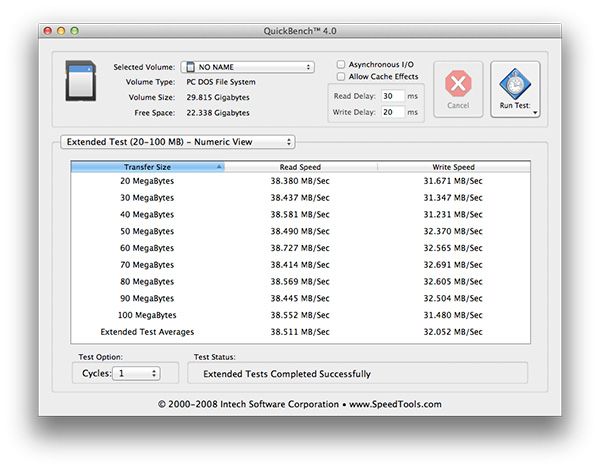
The rMBP by comparison can deliver more than 80MB/s in the read portion of this test. Even writes are faster at ~40MB/s on the rMBP compared to around 32MB/s here. It's a lot of these little things that contribute to the differences between Apple's MacBook Air and Pro lines.
WiFi Performance
Wireless connectivity remains unchanged from last year's model. Broadcom is on 802.11n WiFi duty with its BCM4322. Both 2.4GHz and 5GHz bands are supported. The same 2x2:2 configuration (2 send and receive antennas with 2 spatial streams) remains from last year as well.

I ran the 13-inch MacBook Air through the same three location WiFi test that I put the rMBP and 2011 MBP through, on both 5GHz and 2.4GHz. Performance on 2.4GHz was unusually low on the Netgear WNDR4500 I usually test with (10 - 20Mbps regardless of location) so I had to switch to the previous generation Apple Time Capsule to ensure there was nothing wrong with the notebook itself. All of the 2.4GHz MBA numbers have a star next to them to indicate that they aren't totally comparable as they're using a different AP. The 5GHz numbers all came from the Netgear however.
| Location 1 | Location 2 | Location 3 | |
| 2011 MacBook Pro (2.4GHz) | 124.0 Mbps | 12.6 Mbps | 61.6 Mbps |
| Retina MacBook Pro (2.4GHz) | 117.9 Mbps | 87.6 Mbps | 44.0 Mbps |
| 2012 MacBook Air (2.4GHz) | 95.7 Mbps* | 75.2 Mbps* | 31.2 Mbps* |
| 2011 MacBook Pro (5GHz) | 186.8 Mbps | 154.6 Mbps | 24.7 Mbps |
| Retina MacBook Pro (5GHz) | 227.7 Mbps | 156.8 Mbps | 33.7 Mbps |
| 2012 MacBook Air (5GHz) | 159.4 Mbps | 97.0 Mbps | - |
Overall WiFi performance is decent but obviously not as good as what you get from a MacBook Pro. Looking back at the results I almost wonder if the 2011 MBP wasn't showing some of these weird 2.4GHz issues on the Netgear router as well.
In the best conditions on 5GHz you can hit around 160Mbps, but you pretty much have to be right next to a good AP for that to work. Across a large room or in an adjacent one just under 100Mbps is possible on 5GHz as well. Go further out and you'll have to switch over to 2.4GHz.
There are no wired network options by default, however Apple's Thunderbolt to Gigabit Ethernet adapter works just fine on the new Air as well as the rMBP.
MagSafe 2
MagSafe 2 makes an appearance on the new MacBook Air, although it's curiously absent from the non-retina MacBook Pro. Eventually I'd expect all Macs to use MagSafe 2. The current state of things is likely temporary fragmentation. Similar to the rMBP, the actual power adapters themselves haven't changed: 45W is all you need for both systems.
Ivy Bridge on Air
Apple keeps its CPU options pretty simple and straightforward. You get a choice of three different CPUs, all dual-core, all rated at a 17W TDP. The Core i5-3317U comes standard in the 11, the i5-3427U comes with the 13, and both systems can be upgraded to the Core i7-3667U.
The breakdown between the chips is below:
| Apple 2012 MacBook Air Comparison | |||||
| 1.7GHz dual-core | 1.8GHz dual-core | 2.0GHz dual-core | |||
| Standard On | 11-inch MBA | 13-inch MBA | Optional for Both | ||
| Intel Model | Core i5-3317U | Core i5-3427U | Core i7-3667U | ||
| Base Clock Speed | 1.7GHz | 1.8GHz | 2.0GHz | ||
| Max SC Turbo | 2.6GHz | 2.8GHz | 3.2GHz | ||
| Max DC Turbo | 2.4GHz | 2.6GHz | 3.0GHz | ||
| L3 Cache | 3MB | 3MB | 4MB | ||
| AES-NI | Yes | Yes | Yes | ||
| VT-x | Yes | Yes | Yes | ||
| VT-d | Yes | Yes | Yes | ||
| TDP | 17W | 17W | 17W | ||
| Processor Graphics | Intel HD 4000 | Intel HD 4000 | Intel HD 4000 | ||
| GPU Clock (Base/Max) | 350/1050MHz | 350/1150MHz | 350/1150MHz | ||
The Core i7 upgrade is likely worth it if this is going to be your primary system for an extended period of time, particularly if it's acting as a desktop replacement. As a mobile device the standard CPUs are quite fast. If you're an annual upgrader, save your money, but if you're going to hold onto the system for a while and do a lot of heavy work on it, the upgraded CPU is probably worth it.
There is a known bug with the upgraded CPU under Windows today. Turbo Boost is disabled under Windows on the 3667U, although it's fully functional under OS X. Apple is aware of the problem and I'd expect a fix at some point, but there's no indication of when.


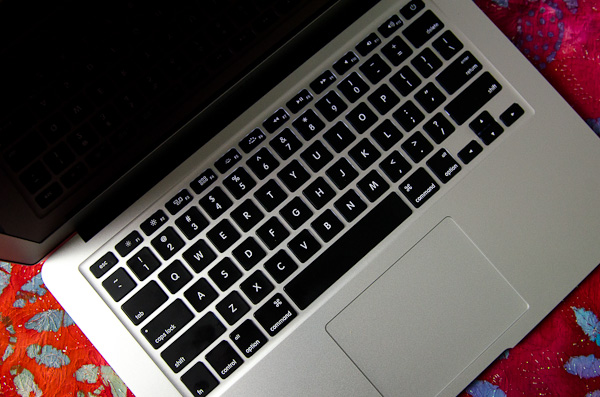
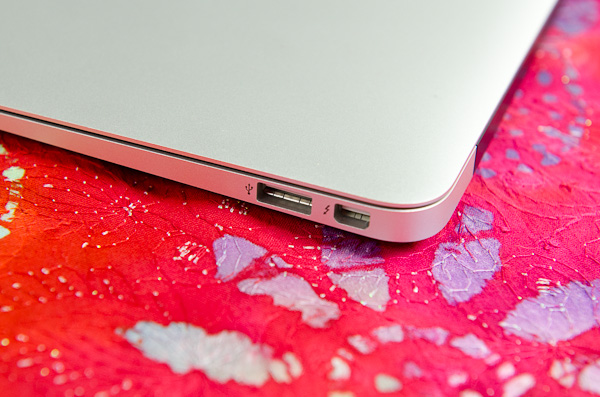

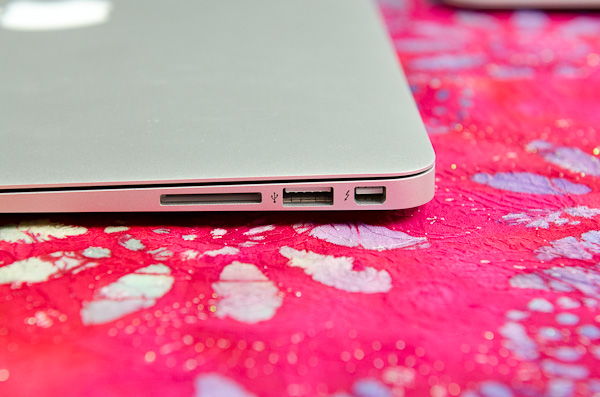
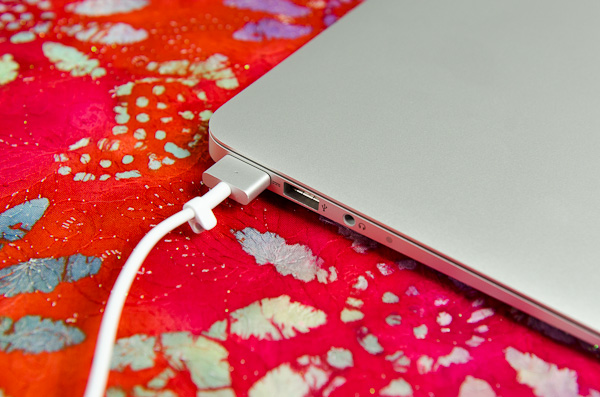








190 Comments
View All Comments
EnzoFX - Monday, July 16, 2012 - link
but it's so cool to hate apple! Some people just can't stand when Apple has the overall better package. The thing I don't get with these haters is that they never, ever understand half the story. They get caught up in specs, they don't see that Apple consistently has solid drivers and software that other's solutions pale by comparison. Take touchpad drivers, they are still hit or miss, and not as good as Apple's Laptops. Those easy to get going apps? Well what do you think the average consumer wants? Actually, who doesn't want easy to set up? What good is an amazing camera if it has a cumbersome application to go with. I'm not saying one thing is more important than the other, just that it's all about the overall package, people like him clearly miss the more important components of it.Sunburn74 - Monday, July 16, 2012 - link
Its not hating apple. More like how an increasing number of reviewers walk in with pre-established beliefs concerning apple and those subconcious beliefs are evident in their writing. Its kind of like having a thing for blondes and then being a reviewer of good looks at a modeling contest. You can try your best to be perfectly objective, but geez your preferences will come out, especially to people who don't give a care about hair color or even more so to people who prefer brunettes and etc.Anand may not believe it (the people on engadget as well, and the verge is horribly pro apple), but he has pre-determinined beliefs about apple (like we all do) which come out in his writings. Just think about it like this. Anand's primary machines are macs. If he were to say mac's are crap, he'd be slighting himself in a way. I realize saying macs are crap are the extreme, but the point is the same. Saying something negative about apple is saying something negative about himself.
KPOM - Tuesday, July 17, 2012 - link
It's true the other way, though. Read the Macalope column in Macworld and you'll see examples of some of the nonsense put out (Katherine Noyes is a frequent target).Anand is pretty upfront that he uses Apple devices. However, he did point out the weak spot in the 2012 MacBook Air, which is that the display hasn't evolved along with the rest of the device. Otherwise, it's hard to argue with their choice of components. The keyboard and trackpad are still top notch (only now, about 4 years after Apple, are Windows OEMs starting to get multitouch trackpad drivers running smoothly, for instance). The SSDs are Samsung or SandForce based (in line with the industry). They are offering 256GB and 512GB SSD capacities (which are rare), an 8GB RAM option, and the 2.0GHz Core i7 option (many others are topping out at 4GB and the 1.7GHz or 1.9GHz i7). The camera and wi-fi components are competent. Objectively, it is difficult to argue that the MacBook Air isn't one of the higher end ultraportables.
mavere - Monday, July 16, 2012 - link
Anand states that the MBA is a top-tier competitor in the ultrabook market. Unless you care to refute that conclusion, the obvious implication is that Good >> Bad, which was the exact tone of the review.Five pages of bashing trivialities and concluding with "oh I guess this is one of the best products in its category" (not exactly a controversial statement here) would have served no one.
Freakie - Tuesday, July 17, 2012 - link
Yet other Anandtech writers do EXACTLY that. They will nit-pick over very many small "trivialities" but they will not go and use them to say that it is a crap product. There is a difference between objectively reviewing a product and then acknowledging its stance in the market, be it one of the best or one of the worst, and writing like a fanboy.Galatian - Monday, July 16, 2012 - link
On a side note I actually also did not see any improvement in camera to my MacBook Pro 15" from 2008 which was still the normal "SD" quality...then again I never used it for anything anyway...I just checked out: I do have the Samsung screen but Toshiba SSDs...The boot time IS amazing. Being able to work within 20s from pushing the button is invaluable to me, not that i got used to working my new Air.
By the way Anand: Am I just stupid or did you say you were going to post the screen profiles?
GotThumbs - Monday, July 16, 2012 - link
I totally agree.Objectivity and Independence is missing in this "Review".
Endorsement is more like it " buy the 11."
I've been Reading this site for over 9 years. Very disappointed with Anand.
uhuznaa - Monday, July 16, 2012 - link
Well, either Anand is mutating into an Apple fanboi or these things are really just good. Judging from the benchmarks and the pure facts (as well as my own limited experiences) I tend to the latter.[BTW, what's up with the login here? Neither Chrome nor Firefox are able to save and restore my password here. This really is getting on my nerves since I use strong, unique passwords everywhere and looking it up every fscking time I want to post a comment is somewhat uncomfortable.]
EnzoFX - Monday, July 16, 2012 - link
Works with 1Password =p.Anand Lal Shimpi - Monday, July 16, 2012 - link
The FaceTime HD camera in the MBA appears to be one of the best out there, at least in what I've seen compared to most notebooks. My point wasn't to balance out the negative, but rather put it in perspective. The comment about needing good lighting applies to every single integrated webcam shipping in a notebook today.The same for WiFi. The MBA's WiFi is competitive with everything else in its class, no one offers anything better in this chassis size while many offer something worse. Until recently many Ultrabooks were still shipping 1x1:1 configurations. The 3x3:3 setup is just something you get when going to the more expensive Pro models.
The real disappointment here is the display, not in that it's bad but that it's not as good as the new bar set by the ASUS Zenbook Prime.
Take care,
Anand